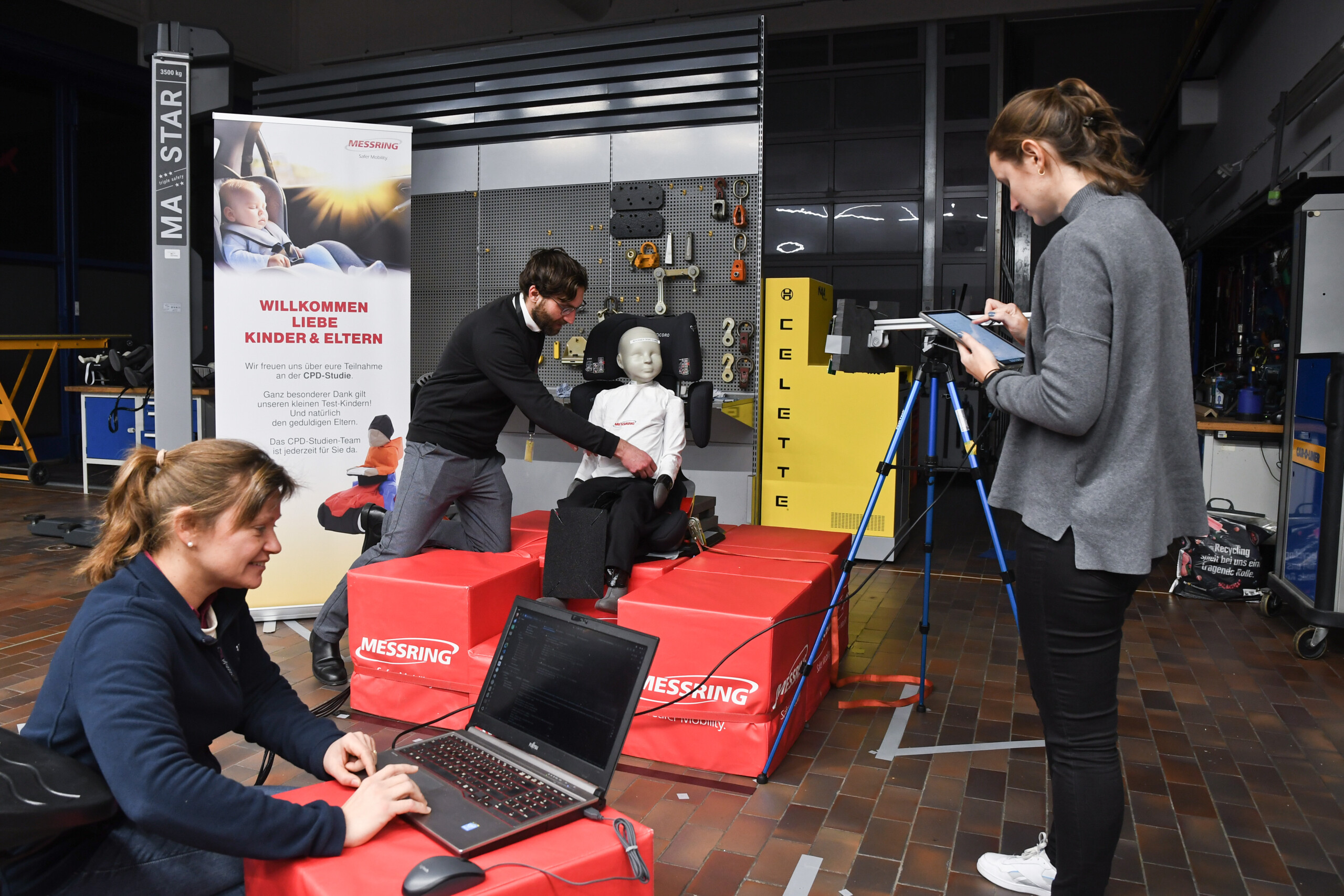Topics at the Allianz Center for Technology:
Study on the validation of child detection systems in vehicles

February 2025
In collaboration with Messring GmbH, the Institute of Legal Medicine (Biomechanics and Accident Research) at the Ludwig Maximilians University of Munich and the other partners Continental and Embedded AI, a study was conducted at AZT to validate child detection systems in vehicles.
Every year, children tragically lose their lives due to heatstroke in cars. In the vast majority of cases, the children are simply forgotten in the car. The drastic increase in interior temperature when a car is exposed to the sun can quickly lead to life-threatening situations.
These are accidents that must be prevented at all costs!
Vehicle manufacturers, consumer organizations and government agencies have recognized that action must be taken. One of the cornerstones of the prevention concepts is the use of various sensors in the vehicle to detect the presence of children and then trigger the warning cascade. To validate the sensors, simulation systems in the form of test dummies are used. To ensure that these provide a usable test result, the systems must in turn be validated with real test subjects. To date, however, there has been a lack of data from real test subjects to understand what children's sensor signatures look like and what reflection can be expected from the dummies.
In order to close this gap and to gain initial experience with children inside and outside of a vehicle with different sensors in different positions and types of action in relation to simulation systems, a series of tests was carried out at AZT with real test persons. AZT provided the optimal infrastructure for the tests and ensured a pleasant environment for all guests, young and old.
The evaluations of the tests are still ongoing. However, a first look at the data showed that the test persons, all between a few months and 6 years old, were detected by the sensors after just a few seconds, whether they were sleeping or moving. Important data on the radar reflectivity and breathing amplitudes of the children could be collected to optimize the corresponding surrogates. The results will be incorporated into the test procedures and evaluation criteria of consumer protection, e.g. EURO NCAP. The warning that a child has been left in a vehicle can be issued quickly via an installed app, via acoustic and optical warning signals from the vehicle, and finally via an emergency call automatically placed from the car.
We are pleased to be part of this important initiative and to have been able to contribute to better prevention!